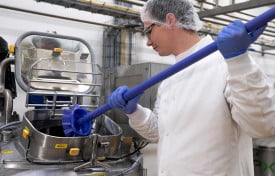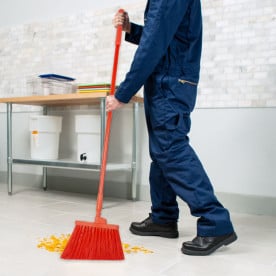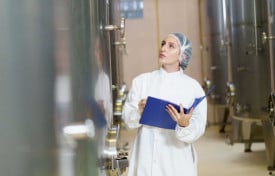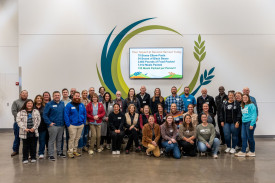Food Safety

- January 21, 2015
“You could also ask who’s in charge. Lots of people think, well, we’re humans; we’re the most intelligent and accomplished species; we’re in charge. Bacteria may have a different outlook: more bacteria live and work in one linear centimeter of your lower colon than all the humans who have ever lived. That’s what’s going on in your digestive tract right now. Are we in charge, or are we simply hosts for bacteria? It all depends on your outlook.” - Neil deGrasse Tyson, Space Chronicles: Facing the Ultimate Frontier.
As funny as that may sound and as puzzling as it may be to think about, it is true. Bacteria are everywhere; most of them are good and normal and are absolutely necessary for the maintenance of our health, environment, and well-being. They are responsible for some of the best things (in my book) in life…like cheese, beer, and wine. But when the wrong bacteria get into our food supply, the results can be disastrous.
Historically, testing for the presence of what is known as an indicator organism in our water and food supply, has played a significant role in the food industry. These levels are monitored as indicators of food quality, food safety, and a marker of the overall hygienic status of the production facility. E.coli, Coliforms, and Enterobacteriaceae are three indicators that have been, and are currently used in the industry.
In 1887 a well-known bacteriologist, Theodor Escherich, observed a pervasiveness of organisms now known as Esherichia in human stools. Later, E.coli and other organisms were used to indicate the potential presence of pathogens in water. In 1915, the U.S. Public Health service changed this standard indicator from E.coli to Coliforms. Using E.coli and Coliforms as indicators of water safety and quality eventually spread to testing for these organisms in other foods. First, pasteurized milk and dairy products were tested and then an array of other foods followed.
- September 24, 2014
Detection of contaminants is a critical aspect of ensuring food safety, especially with stringent government regulations. The use of metal detectors is increasingly vital to identify and reject harmful objects, contributing to enhanced Hazard Analysis and Critical Control Points (HACCP) and Good Manufacturing Practices (GMP) programs. This comprehensive approach extends to a wide range of metal-detectable products, from safety supplies to processing tools, ensuring the integrity of food products. The smallest detectable foreign object varies based on factors like material, line speed, and moisture content, with the detector head's height being crucial. Calibration is a key process, involving setting thresholds based on contaminant size and collaborating with the metal detector manufacturer. Regular testing of calibration is essential to prevent larger contaminants from bypassing the detector and compromising product safety. Metal-detectable products, often colored blue for easy visual detection,
- May 07, 2014
A year or so ago, I was sitting comfortably in a classroom proctoring an exam. Freshly tenured, a few books and articles written, and now an associate professor in the humanities, I should have been feeling pretty content. My former Ph.D. student self would have thought so…yet, my mind was wandering. As students filled out their exams on film history, I couldn’t help but ponder what necessary standards potentially were used for the bottled iced coffee with milk beverage that I was drinking that evening. How was the milk procured? What did their facility look like where they brought these ingredients all together? Did they monitor temperature during transport? Was it properly handled when it was shelved at the convenience store? How had pH levels been monitored throughout the process?
Yes, this would just seem like neurosis to many; however, there was something more going on…The past five years I had been doing research and writing for Nelson-Jameson on the side, in the hopes of filling in some economic gaps left by my then current position. Over the course of those several years, my research heavily focused on food safety and quality control/assurance. Far from neurosis, the clouds parted that night when I realized I was staring into the face of a passion that had developed (no, not an appreciation of iced coffee), the want to help provide a safe, quality food supply.
I suppose slowly, the research methodologies and patterns of critical thought/engagement I was so comfortable with in my work at the university, seeped into pursuing this topic. Yet, I had never seen this path coming. So when I had the opportunity afforded to me to continue on this trail as a manager of the Laboratory Products area, I jumped on it.
- April 15, 2014
We have all heard of “helicopter parents,” those that coddle and hover over their kids. Remarkably annoying to educators, scout leaders, etc., one has to at least respect that they (in their own bothersome and overt way) essentially want to ensure their kid’s safety and well-being. Well, what about being a "helicopter" producer?
Don’t you want to ensure the safety and quality of your product when raw ingredients come into your facility or when the finished product heads out on the truck to be sold? Do you worry that your product might be compromised by influences beyond your control? Are you keeping an eye out for things occurring in-house that might compromise your product?







